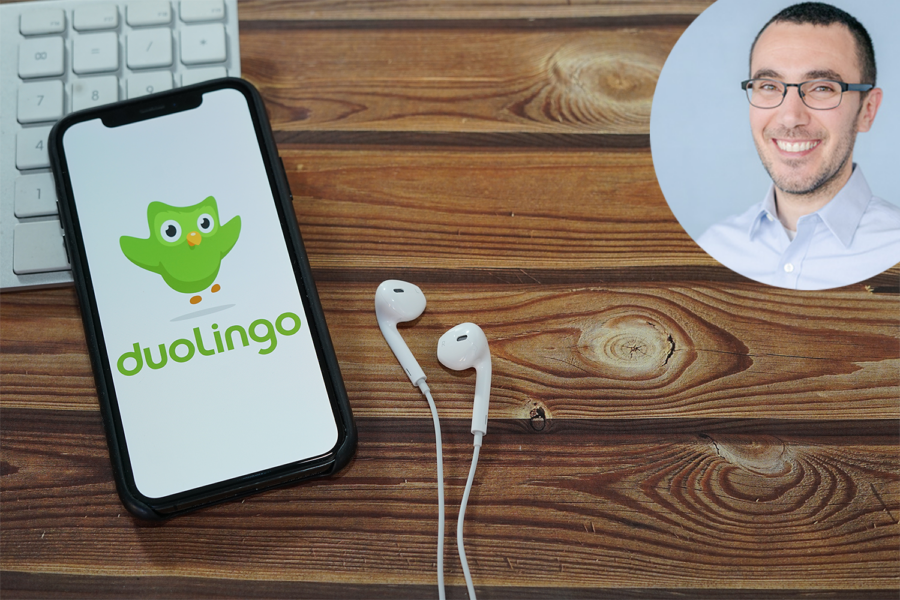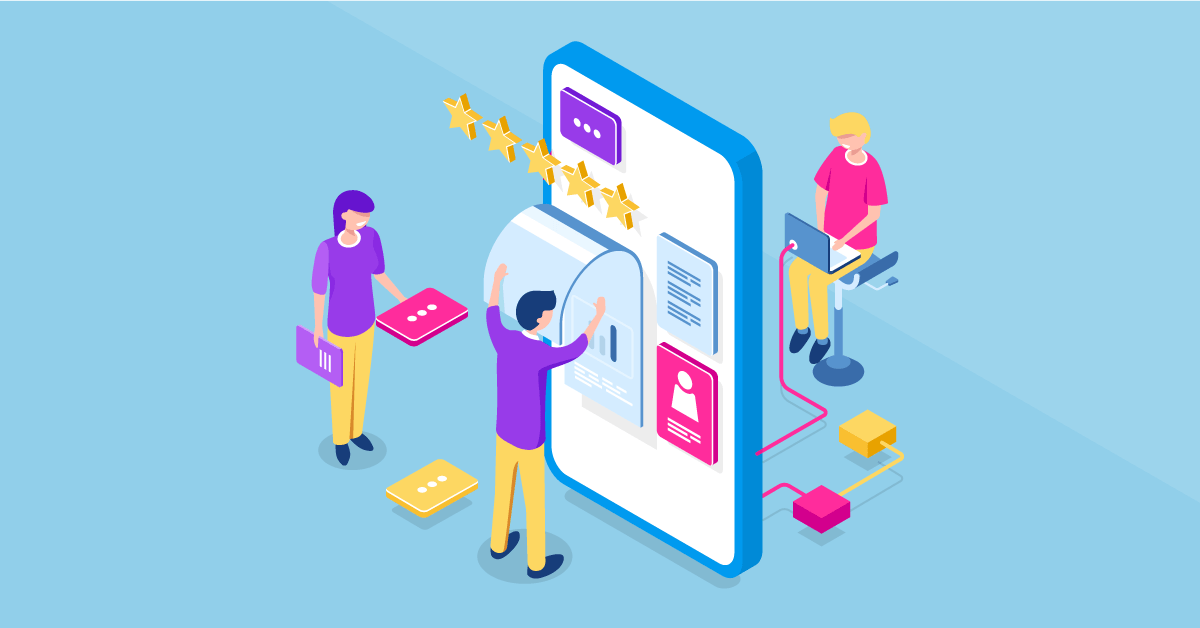Dear Guido,
My co-founder and I developed our edtech app a little over a year ago as an engaging game for teachers to use in the classroom. We are beginning to have conversations at the district-level with instructional technology leads and the like. We have found that one of the first asks is to prove how our product enhances teaching and learning. As we look to invest more resources in building the instructional design behind our product, we would love some guidance about how best to start.
— Instructional Re-Design
I thought it was best to pass this question along to Jennie Kristoffersen, our Vice President of Content Strategy at Nearpod… she has a 20-year career as a classroom teacher, district-level math coordinator, and various leadership roles in the educational publishing industry.
— Guido
Dear Instructional Re-Design,
Your question is excellent. My definition of “change” has evolved over the years as new pedagogies and technology are introduced. When I think about today’s kindergarteners (the graduating class of 2032…!), I think about how critical it is to not only teach students for the world they are living in, but also the world that awaits them. This type of learning requires a transformation in the way we approach teaching.
The world today is different; it’s not the way many of us learned in our classroom experiences back in the 70s, 80s, 90s, or even the early 2000s. Just five years ago, I was engaged in conversations with tech leaders in a Top 10 school district about the goals of “lessening the weight in the backpack” when going 1:1. Now, my conversations have shifted to talk about how teachers can change the way instruction looks in the classroom — challenging, and often rejecting — traditional methods of content delivery.
I’d like to introduce you to a few digital transformation models that schools and districts use to implement and evaluate edtech initiatives.
SAMR
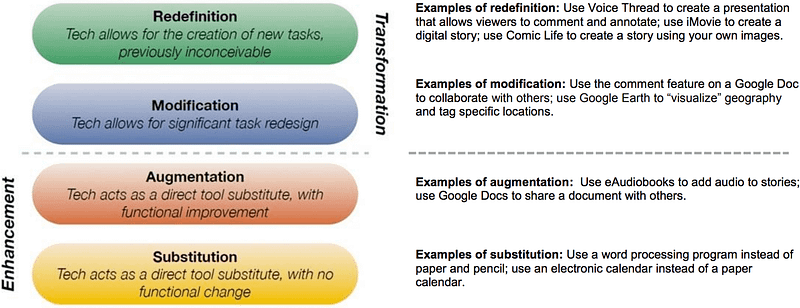
SAMR provides an approachable framework to begin thinking and talking about transformation. This model has always challenged me to think about if I’m simply Substituting or Augmenting what a teacher is already doing in their classroom with instructional efficiencies, or if I’m truly building technology to Modify and Redefine instruction in the classroom.
It’s important not to downplay the S and A, as they are the critical building blocks that teachers need to advance in the framework. By starting at S&A-type features, you are providing teachers with an accessible entry point into incorporating technology in their classroom. I recommend providing teachers with a handful of tools in their comfort zone, while slowly laying down aspirational lanes to head toward full transformation. At Nearpod, for example, formative assessment features are the most commonly used elements within Nearpod, because teachers can quickly embed them within existing lessons to augment instruction. When teachers are ready to take the next step and modify instruction, they can add rich multimedia (e.g. VR and PhET simulations) alongside assessments to foster rich discussions.
Consider the following:
- Substitution check: The S of SAMR is simply replacing analog with digital experiences. For example, an eBook replacing a textbook or even digital formative assessment replacing write n’ wipe boards.
- Augmentation check: The A of SAMR is about enhancing the classroom through technology. This is the most common use case of first-time users of Nearpod. They may upload existing PPTs or PDFs and add features like quizzes, reports and simple widgets to augment existing lessons.
- Modification check: When you’re ready to move over to the M, you — as an entrepreneur — need to ask yourself how you can build a product that allows teachers to do more significant redesign of a learning experience . A common application in Nearpod is replacing the use of an image as an example to access prior knowledge with VR that immerses students in the real world example and actives higher-order thinking skills. Our instructional software allows teachers to analyze across multiple texts, videos, simulations, etc — all within one seamless experience.
- Redefinition check: The challenge here is “Am I enabling experiences that were inconceivable without technology?” But to be frank, Nearpod — and most districts — are still working its way up the SAMR model. To truly redefine how instruction looks in the classroom, we must ask ourselves “how are we empowering students with technology — not just in use but in selection and effective application?”
Tech Integration Matrix
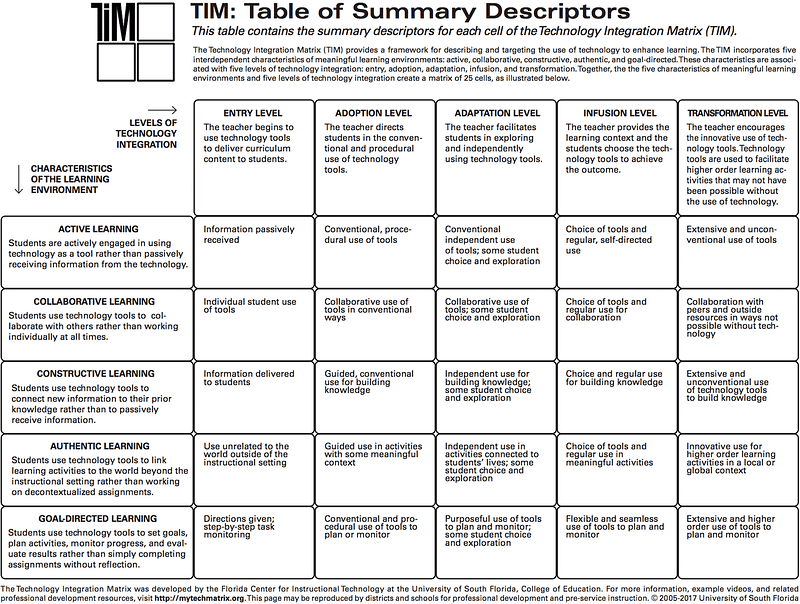
Another model that’s commonly used to enhance the instructional design behind EdTech products is the Tech Integration Matrix (TIM). TIM highlights characteristics that align strongly with the 4C’s of 21st-century learning, guiding you beyond the question of “Are you doing these things?” and into “How are you doing these things?” This is what makes the TIM approach especially powerful in ensuring the transformation of instructional experiences.
TIM has two layers; the first (levels of technology integration) mirrors SAMR in its gradient of implementing devices and software into the classroom. The second layer, however, brings in a crucial set of classroom characteristics that can help you evaluate the actual learning experience your tool is enabling — a critical metric to include alongside the more traditional business goals of implementation and growth of your product.
Consider the following:
- Active check: Any effective solution is going to blend between analog and digital. Are you blending your technology tool with hands-on learning or kinesthetic learning?
- Collaboration check: Does your experience have students primarily “heads down in devices” or is it facilitating communication and collaboration amongst students? (some of the most important skills to be successful in the 21st century)
- Constructive check: Are you allowing students to build their own understanding or is it just a fun game?
- Authenticity check: Are you just mentioning real-world, relevant examples in the content or are you actually getting students to engage with them?
- Goal-directed: Are students making choices and directing their learning, or is an algorithm doing it for them?
T-Pack
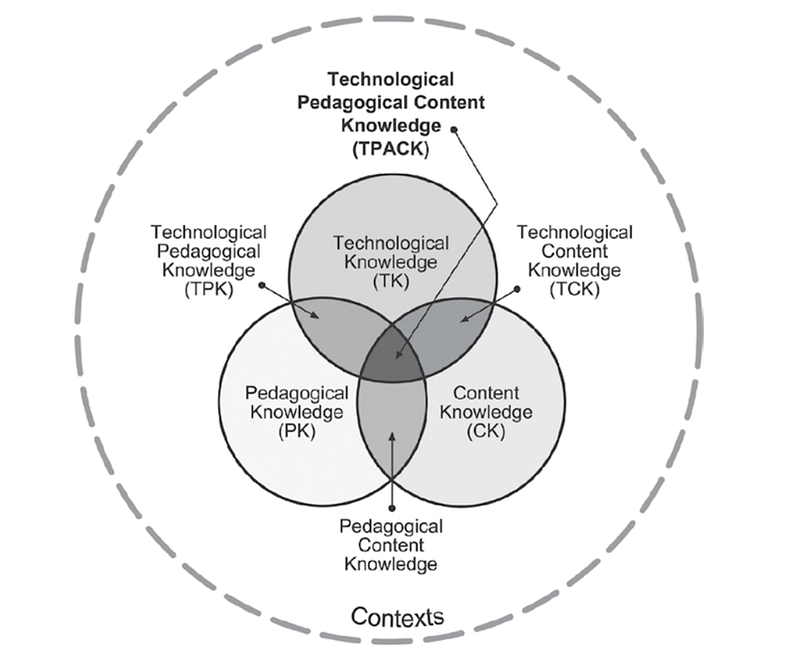
The T-Pack model is one of my favorites and reminds me a lot of what we’re doing here at Nearpod, given that it blends the software and content worlds. The T-Pack model asks “How are you using technology and digital content together, and what does that mean in terms of the pedagogy driving your teaching?” In order to get to the center of TPACK, you need to be thinking of these three elements together: technology, content, and pedagogy.
If you’re looking to truly transform, you can’t just think of making an app for teachers to use on its own. Similarly, you can’t just have digital content that operates in its own sphere. I’ve often observed when using these as isolated resources, best instructional practices go out the window. You need to dig deeper into the pedagogy to develop a rationale for how people are intending to use software and content together to ensure student learning happens and that shift in instruction happens as well.
Consider the following:
- Technology: Am I building instructional software that incorporates research-based best practices into digital learning? Does it mimic the cadences that appear in best practices such as stopping to assess student understanding and providing opportunities to address misconceptions?
- Content: Is my goal to build compelling digital assets that teachers need to figure out how to integrate into compelling learning experiences? Are you intentionally designing the build of content to ensure that students are walking away with a deep understanding of the intended learning objectives?
- Pedagogy: Are you intentionally building your software and content offerings in tandem? What’s your intended goal? A change in teacher behavior? A change in student performance? Do the software and content complement each other to achieve the desired instructional outcomes?
Nearpod VR illustrates the power of a model like T-Pack. Virtual reality can be a powerful stand-alone digital content asset. However, when we want that VR experience to help facilitate specific learning outcomes, it cannot be integrated haphazardly within a learning experience — the asset alone will not transform teaching and learning. Rather, the integration of the VR asset into the larger, research-based learning sequence is what creates the largest impact. In this case, the VR experience itself is second to the way in which it is leveraged in the larger learning context.
Getting Started
So, how do you get started? First, make sure you’re talking with enough educators that represent the full range of users you aim to reach. Head to a conference like ISTE or CUE and you’ll certainly encounter your innovators and early adopters. But to gain insight that allows you to build for widespread adoption, you need to reach beyond those venues. It’s important to make sure you’re representing teacher needs across the board, and not just those of the tech enthusiasts.
Whether you’re building content that requires software or building software with content in mind, it’s valuable to think through different user journeys during development (what does this mean for tech-savvy science educator? or more traditional math educator?). Subject-specific conferences such as NCTM or NSTA could help accelerate this need-finding process.
Overall, it’s important to remember that true transformation isn’t a one-time product build; technology rapidly evolves, and so our product design efforts should never be complete.


